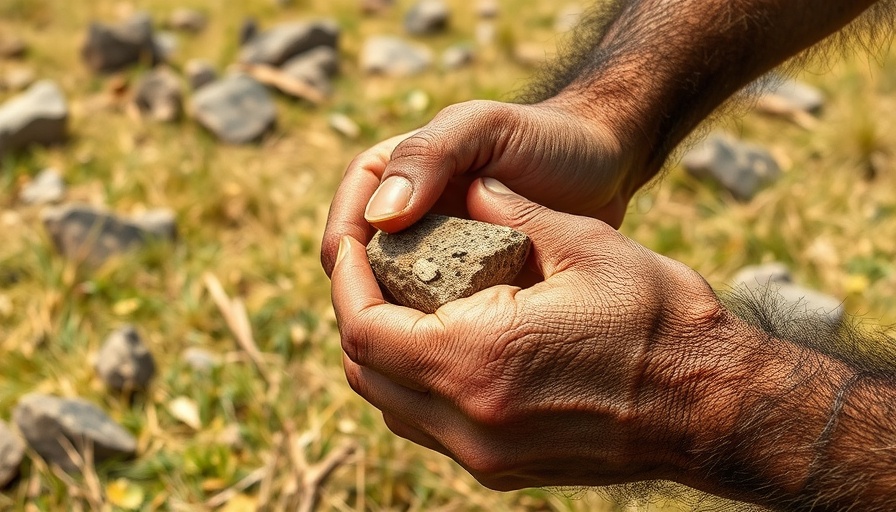
Understanding Human Evolution Through Hand Structure
The complexity of human evolutionary history is subtly reflected in the anatomy of our hands, as revealed by recent discoveries regarding ancient hominins in South Africa. Researchers have identified significant differences in finger bone morphology between two distinct species, Australopithecus sediba and Homo naledi, hinting at how these early human relatives not only adapted to their environments but also their potential dexterity and climbing abilities.
The Significance of Finger Bone Morphology
Dissecting the intricacies of finger morphology offers a window into understanding the tool use and environmental navigation skills of our ancestors. A. sediba, dating back about two million years, presents a hybrid of ape-like and human-like features in its hand structure, while H. naledi showcases unique thickness patterns in its finger bones. These physical traits suggest differing abilities in manipulating tools and climbing, raising questions about how these species interacted with their habitats.
Exploring Different Gripping Techniques
Through their research, led by experts from the Max Planck Institute for Evolutionary Anthropology and the American Museum of Natural History, scientists found evidence that A. sediba and H. naledi employed varied grips when using both tools and navigating their environment. This diversity in hand function challenges the traditional narrative of linear human evolution, particularly regarding our ancestors' adaptation strategies.
The Climbing Debate: Skill or Legacy?
Despite their advanced dexterous capabilities, many features observed in both hominins—especially in their upper limbs—bear striking similarities to those found in tree-dwelling species. Whether these traits indicate an active climbing lifestyle or are merely evolutionary remnants from less-grounded ancestors continues to fuel debates among paleoanthropologists.
Wider Implications for Human Evolution
The implications of this research extend far beyond fingers and grip. They suggest a more complex and nuanced picture of our evolutionary journey, where adaptations for various forms of locomotion, tool use, and dietary processing coexisted and influenced each other. This complexity is crucial for understanding the social structures and survival strategies that played a role in shaping early human life.
Lessons for Modern Adaptations
While the research focuses on ancient human relatives, it offers modern individuals insightful lessons regarding adaptation and tool use in today's fast-paced world, particularly in the bustling city of Dallas. Just as our ancestors adapted their physicality to survive and thrive, today's residents often navigate challenges in urban life using a blend of skills—be it through technology or social connections.
Connecting Past Skills to Dallas Living
In a city marked by its vibrant lifestyle and cultural diversity, the ability to adapt remains key. The history of human evolution underscores the necessity of having a multifaceted skill set—much like the dexterity illustrated by A. sediba and H. naledi. For residents of Dallas, this can translate into being agile in managing the cost of living, social interactions, and professional engagements. Understanding the balance between historical skills and modern requirements is fundamentally valuable in today's societal framework.
Thus, drawing lessons from ancient human dexterity not only enriches our evolutionary narrative but also informs how we can approach contemporary life in Dallas. Living in a city demands awareness and adeptness, whether it's handling the cost of living in Dallas or networking amidst its dynamic culture.
Consider how you can apply a blend of skills in your own life, just as early hominins did in theirs. This research illuminates not only our past but offers insights into actively shaping our present and future.
 Add Element
Add Element  Add Row
Add Row 



Write A Comment